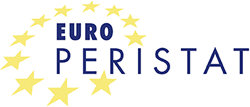MATERNITY AND NEONATAL UNIT RANKINGS IN EUROPE
In many countries, hospitals are ranked nationally on their quality of care. These rankings give healthcare providers and policy planners feedback on the organization of their services, and provide benchmarks to improve performance and promote better health.
The goal in making these rankings public is to increase accountability and contribute to patients’ sense of self efficacy. National or regional variations in health outcomes and health care raise important questions for patients and their families as they navigate through the care pathway: “Am I at the right place? and getting the best care for my particular needs?”
One of the difficulties, however, is making sure that these rankings take into consideration each hospital’s patient-mix; some specialized or tertiary hospitals care for sicker patients and this will make these hospitals look worse unless it is possible to adjust their outcomes for their specific patient characteristics.
Many European countries provide official assessments of individual maternity or neonatal units through their health and research agencies. In other countries, parental networks and non-profit organizations have come together to provide quality assurance data to pregnant women and their families. Across countries, pregnant mothers and their care providers do not have equal access to the information there is.
We asked Euro-Peristat Scientific Committee members to give us information on sources of maternity and neonatal unit rankings in their country. Have a look at our overview of scientific committee responses to our questions, below. Click on the links to official reports and websites for more details about the indicators that are used to describe maternity units. Many of these reports rank maternity units within their level of care to take into consideration patient case-mix.
| Country | Data source | Weblink | Comments |
| Croatia | Public Health Institute | http://rodilista.roda.hr | Generalist website (not specific to maternal and newborn health, no data on outcomes) |
| Cyprus | NA | ||
| Finland | Public Health Institute | https://www.thl.fi/en/web/thlfi-en/statistics/statistical-databases/database-reporting#Sexual | |
| France | Media org. | http://maternites.doctissimo.fr/palmares-des-maternites.htm | |
|
Germany
|
Health Insurance companies
|
Very Low Birth Weight quality of care indicators: www.perinatalzentren.org |
Quality indicators of hospital care are published by health insurance companies
www.perinatalzentren.org is designed for patients and experts, and pertains mainly to quality of care indicators in neonatal units |
| Latvia | NA | Perinatal Committee data are not publicly available. | |
| Lithuania | NA | Rankings are not publicly available. | |
| Luxembourg | NA | http://www.liewensufank.lu/ | No information on interventions. |
| Other | NGO | http://enca.info/ | European Network of Childbirth Associations |
| Poland | NGO | www.gdzierodzic.info | |
| Portugal | NGO | ||
| Romania | Public Health Institute | published in the Official Romanian Monitor | Ministry of Health ranks departments of Obstetrics-Gynaecology and Neonatology internally. These data are not publicly available. |
| Slovakia | Public Health Institute | http://tehotenstvo.rodinka.sk/sprievodca-porodnicami/ | Maternity Ward Guide |
| Spain | NGO | https://www.elpartoesnuestro.es/informacion/el-parto-en-cifras | “El Parto es Nuestro” (Birth is Ours) has data available for each Spanish region, official assessments of individual maternity or neonatal units from health or research agencies. |
| Switzerland | Public Health Institute | Generalist websites (not specific to maternal and newborn health) | |
| UK | Public Health Institute ; consumer organisation
|
https://indicators.rcog.org.uk/results/indicators http://www.which.co.uk/birth-choice/ http://image.guardian.co.uk/sys-files/Guardian/documents/2008/01/24/HOSPITALS.pdf |
consultation 2017 on-going |
